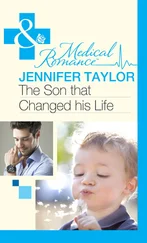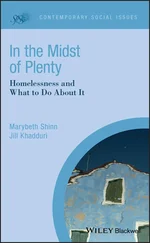Jennifer Worth - In the Midst of Life
Здесь есть возможность читать онлайн «Jennifer Worth - In the Midst of Life» весь текст электронной книги совершенно бесплатно (целиком полную версию без сокращений). В некоторых случаях можно слушать аудио, скачать через торрент в формате fb2 и присутствует краткое содержание. Жанр: Биографии и Мемуары, на английском языке. Описание произведения, (предисловие) а так же отзывы посетителей доступны на портале библиотеки ЛибКат.
- Название:In the Midst of Life
- Автор:
- Жанр:
- Год:неизвестен
- ISBN:нет данных
- Рейтинг книги:3 / 5. Голосов: 1
-
Избранное:Добавить в избранное
- Отзывы:
-
Ваша оценка:
- 60
- 1
- 2
- 3
- 4
- 5
In the Midst of Life: краткое содержание, описание и аннотация
Предлагаем к чтению аннотацию, описание, краткое содержание или предисловие (зависит от того, что написал сам автор книги «In the Midst of Life»). Если вы не нашли необходимую информацию о книге — напишите в комментариях, мы постараемся отыскать её.
In the Midst of Life — читать онлайн бесплатно полную книгу (весь текст) целиком
Ниже представлен текст книги, разбитый по страницам. Система сохранения места последней прочитанной страницы, позволяет с удобством читать онлайн бесплатно книгу «In the Midst of Life», без необходимости каждый раз заново искать на чём Вы остановились. Поставьте закладку, и сможете в любой момент перейти на страницу, на которой закончили чтение.
Интервал:
Закладка:
In the first year, the student paramedics cover all the basic education, and by year two they train alongside established paramedics and work as part of an ambulance crew (although they are not allowed to practise autonomously). As the course continues, they learn new practical skills, and complete various hospital and clinical placements to complete their education. Clinical skills are practised under the supervision of experienced paramedics, who have also completed a practice placement educators’ (PPEDs) course.
At the end of three years, all the education, clinical skills and experience from working on the front line allows the students to join the ranks of the rest of us registered as paramedics by the Health Professions Council. Every paramedic has to re-register every two years and maintain evidence of clinical professional development to remain on the register – failure to do so could result in a paramedic losing their registration and being unable to practise, in the same way as doctors and nurses must show development.
Our PPs and CCPs undergo degree-level education for an additional eighteen months, and, once qualified, have even more developed examination skills, and can provide more comprehensive roadside care to the patients in the community and at home – our PP clinicians can provide catheter care, perform suturing and wound closure, prescribe broad-spectrum antibiotics and, in some areas, are working alongside general practitioners in facilitating diabetic or asthma clinics.
Our CCPs are working alongside doctors and anaesthetists in providing cutting edge front-line care to those patients most critically ill, working on helicopters and specialist ambulances equipped to transfer patients in drug-induced comas safely between hospitals. This reduces the need to use doctors to look after anaesthetised patients.
Our area now encompasses Kent, Surrey and Sussex in the South East Coast Ambulance Service or SECAMB. The newest advances include a FASTrack Stroke Pathway – we work very closely with all our hospitals so that, when we are dispatched to a patient showing a positive test for a stroke, we can deliver them directly to the nearest hospital able to deliver thrombolytic therapy to dissolve the clot. Stroke patients are now being discharged home and are back at work in weeks – a long way from the treatment a few years ago, when a stroke victim was likely to be paralysed for months, years, or worse.
SECAMB is also the first ambulance trust in the UK fully to follow a new cardiac arrest protocol for out-of-hospital cardiac arrest where the first rhythm is ventricular fibrillation.
SECAMB is now delivering resuscitation based on emphasis for effective cardiac compression, which has been championed by our honorary life medical director, the world-renowned cardiologist Professor Douglas Chamberlain, CBE, who has, for many years, been our greatest advocate, and has worked tirelessly training paramedics.
Our Protocol C resuscitation procedure for patients presenting in ventricular fibrillation is leading the way in pre-hospital resuscitation in the UK. Some of the latest clinical audits published in 2009 for survival following cardiac arrest rate SECAMB as the highest performing ambulance service in the country.
So what exactly does happen when a member of the public dials 999 to a collapsed patient who is terminally ill? Our role is to preserve life, prevent deterioration and promote recovery – but can we always achieve this? What is the dilemma that we, as ambulance paramedics, face when we are called to a patient at the end stage of their illness?
All ambulance service clinicians – technicians, paramedics and advanced paramedics – work within the guidelines of the Joint Royal Colleges Ambulance Liaison Committee (JRCALC). These guidelines are very specific, and state that in the event of being called to a cardiac arrest or near life-threatening event we are obliged to initiate resuscitation unless we have sight of a formal Do Not Attempt Resuscitation (DNAR) order or an Advance Directive to Refuse Treatment.
A patient who is deemed to have mental capacity has the right to refuse treatment, even if not having that treatment leads to deterioration in health and ultimately death. A patient who is unconscious cannot make that decision; it has to be made for them – and in those circumstances, in the absence of any lasting power of attorney by a relative, all steps of active resuscitation would be undertaken unless a DNAR is shown to the ambulance crew.
This formal DNAR must be in writing and given to the crew on arrival at the call. The condition must relate to the condition for which the DNAR is written, so resuscitation should not be withheld for coincidental conditions.
In the case of a known terminally ill patient being transferred to a palliative care facility, the DNAR can be verbally received and recorded by ambulance control.
In an out-of-hospital emergency environment, there may be situations where there is doubt about the validity of an advance refusal or DNAR order. If the ambulance crew are not satisfied that the patient has made a prior and specific request to refuse treatment, they are obliged to continue all clinical care in the normal way.
I am constantly reminded of how my decisions to provide clinical care for patients I attend can have a lasting effect on quite often distressed and highly emotional relatives, who have witnessed the sudden collapse of a cherished one and act on impulse by calling an ambulance … I have the equipment, the knowledge and the clinical skills to initiate and continue advanced life support and resuscitation, and in the absence of any written order I have to do so … Or is this always the case?
I may be ‘just’ a paramedic, but I have empathy with the suffering of the sick. That’s why I am a paramedic and do the job that I do, surely?
Whilst I am very aware that many members of the public urge us to do ‘everything we can’ to save a life, my seventeen years of ambulance service experience have shown me that a good many elderly or terminally ill patients do not require the services of a paramedic; in their time of need, they want peace, or a priest, or, in some cases, both. That is the area that I will now go on to discuss.
About ten years ago I was working on the night shift. It was a little after midnight when the crew received a call to attend a ‘ninety-six-year-old female, breathing difficulty’. We arrived shortly after the call was made and knocked on the door at the address we were given. An elderly man opened the door, and gestured for us to follow him. We traipsed into the house with our equipment and were led into the front room where a very elderly lady lay on a single bed in front of a fireplace.
The lights were dimmed, but I could see that the lady was dying. Her breathing was bubbly, laboured and intermittent. She was unconscious and her eyes were shut, but she was twitching a little bit. My eye caught an empty ampoule of diamorphine discarded on the mantelpiece.
The man began to tell us his story. The lady in the bed was his ninety-six-year-old sister. He was ninety-four, and had lived with her all of his life. My crewmate and I exchanged nervous glances, and the distress visible in her face was most probably echoed in mine. He continued that she had been diagnosed with cancer a couple of years ago and had fought it bravely, but was now nearing the end and had expressed her wish to die at home – in the comfort of her own bed, in the house where she was born, with her brother for company. He realised that the time was near and was scared. He was terrified of her dying, and wanted to make sure she wasn’t suffering.
Читать дальшеИнтервал:
Закладка:
Похожие книги на «In the Midst of Life»
Представляем Вашему вниманию похожие книги на «In the Midst of Life» списком для выбора. Мы отобрали схожую по названию и смыслу литературу в надежде предоставить читателям больше вариантов отыскать новые, интересные, ещё непрочитанные произведения.
Обсуждение, отзывы о книге «In the Midst of Life» и просто собственные мнения читателей. Оставьте ваши комментарии, напишите, что Вы думаете о произведении, его смысле или главных героях. Укажите что конкретно понравилось, а что нет, и почему Вы так считаете.












